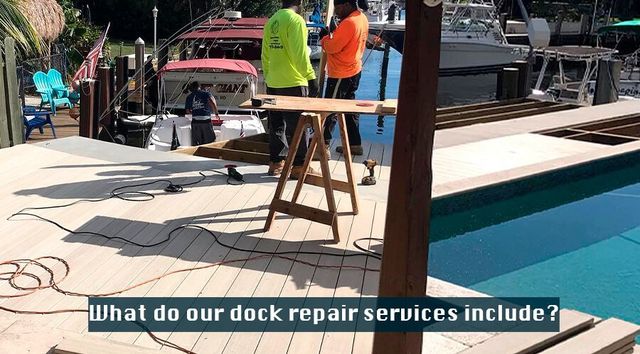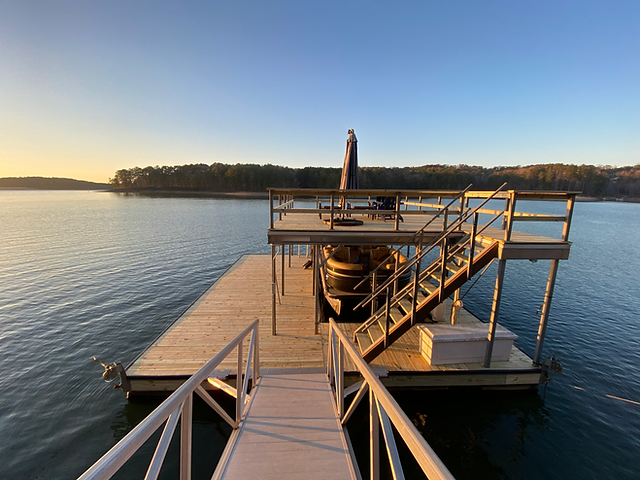Leading Indications You Need Expert Dock Repairs This Period
Leading Indications You Need Expert Dock Repairs This Period
Blog Article
Effective Dock Fixing Techniques: Guaranteeing Structural Stability
Making sure the architectural stability of docks with reliable repair work strategies is critical for the long life and safety and security of marine centers. This involves a multi-faceted strategy starting with thorough evaluations making use of innovative technologies like sonar equipment and remotely ran automobiles (ROVs) to detect both noticeable and hid problems. Ultimately, choosing the ideal fixing products, such as composite products and corrosion-resistant alloys, is essential for toughness. Structural support approaches, including the implementation of cross-bracing systems and load-distribution plates, play an essential role in mitigating anxiety factors. Nonetheless, the relevance of these techniques comes to be obvious when checking out advanced repair work techniques and preventative maintenance approaches.
Examining Dock Damage
Assessing dock damages is a critical very first action in ensuring the structural stability and safety of any type of docking facility. Secret elements to analyze include the dock's foundation, pilings, decking, and hardware (Dock Repairs).
Architectural engineers or certified inspectors commonly carry out these analyses using specialized techniques and tools. For instance, undersea evaluations may use sonar tools or remotely operated cars (ROVs) to identify immersed damage. Above water, aesthetic assessments are complemented by utilizing wetness meters and other diagnostic tools to uncover underlying problems not instantly visible to the nude eye.

Picking Repair Products
Selecting the suitable repair work materials is a pivotal action in the dock remediation procedure, one that directly influences the longevity and performance of the repaired structure. Material selection need to be driven by variables such as environmental conditions, load-bearing requirements, and compatibility with existing dock components. For circumstances, timber is a conventional option for anchors as a result of its all-natural strength and aesthetic allure. Choosing the best kind of timber, such as pressure-treated lumber or naturally rot-resistant types like cedar or teak wood, is crucial to endure water environments.
Along with timber, composite materials are significantly popular as a result of their durability and reduced upkeep needs. Compounds, typically made from a mix of plastic and wood fibers, use excellent resistance to rot, bugs, and UV damages. For steel anchors, picking corrosion-resistant alloys such as galvanized steel or marine-grade aluminum is vital to protect against rust and make sure architectural integrity in saline water problems.
Epoxy resins and marine-grade sealants are essential for repairing splits and securing joints, supplying a waterproof obstacle and improving the dock's overall strength. By carefully selecting top notch materials, dock repair work can achieve lasting outcomes, thereby securing versus future destruction and ensuring safe, trustworthy usage.
Architectural Support Techniques
Effective structural reinforcement techniques are vital in ensuring the security and longevity of dock repairs. This technique is specifically effective for docks revealed to hefty loads or severe ecological problems.
Another vital method is the application of fiber-reinforced polymers (FRP) These materials provide high strength-to-weight ratios and exceptional resistance to corrosion, making them optimal for strengthening wood check my reference or concrete anchors. FRP can be used in sheets or strips and bonded with epoxy materials to boost structural integrity.
Supporting and anchoring systems also play an site here essential function in structural reinforcement. Cross-bracing, utilizing steel or wood light beams, can neutralize lateral forces, decreasing guiding and activity. Securing systems, such as helical piers or driven heaps, offer a stable structure by moving lots to deeper, extra steady dirt layers.
Lastly, the integration of load-distribution plates can assist disperse weight a lot more uniformly across the dock's surface area, reducing localized anxiety points. These techniques jointly ensure that anchors continue to be safe and robust, with the ability of withstanding the roughness of their functional setting.
Advanced Fixing Techniques
One more innovative method includes underwater welding, which enables repair work to be carried out without the need to dewater the area. This approach is particularly beneficial for resolving architectural concerns in submerged dock parts, guaranteeing marginal disruption to operations. Enhanced welding techniques, coupled with robotic systems, provide accuracy and integrity, therefore expanding the life expectancy of the dock.
In addition, cathodic security systems are applied to stop rust in metal dock frameworks. By making use of sacrificial anodes or impressed existing systems, these techniques properly alleviate the electrochemical procedures that result in material damage.
Finally, progressed monitoring technologies, such as architectural wellness surveillance (SHM) systems, give real-time information on the condition of dock frameworks. These systems enable aggressive upkeep and timely treatments, inevitably ensuring the lasting structural honesty of the dock.
Maintenance and Prevention
Maintenance and prevention are fundamental principles that underpin the long life and security of dock structures. Regular evaluations are paramount, enabling very early detection of wear and tear, possible weak points, and ecological influences. A proactive approach, including routine checks for deterioration, rot, and architectural changes, reduces expensive repair work and extends browse around this web-site the dock's functional life.
Safety nets must consist of using safety layers to steel parts to defend against rust and utilizing cured timber to resist degeneration. In addition, making sure appropriate water drainage and ventilation can prevent water build-up, which is a common root cause of structural deterioration. Including quality products and sticking to maker standards during building and repair service phases likewise play critical duties in boosting longevity.

Training employees in dock maintenance finest techniques makes sure regular application of safety nets. Leveraging technical advances, such as drones for examinations and sensors for real-time monitoring, can even more improve upkeep efforts. By focusing on upkeep and prevention, dock proprietors can ensure architectural honesty, functional safety, and cost-effective administration over the dock's life-span.
Conclusion
Finally, keeping the architectural honesty of aquatic centers necessitates extensive dock repair work strategies. Extensive examinations utilizing innovative devices discover both noticeable and hid problems, while the option of suitable repair service products improves resilience. Implementing architectural reinforcement approaches addresses anxiety factors properly. Advanced repair methods, coupled with regular maintenance methods, make sure the dock continues to be functional and safe under diverse ecological problems. Taking on these methods dramatically prolongs the life-span and functionality of marine facilities.
Guaranteeing the architectural honesty of anchors via efficient fixing methods is extremely important for the durability and safety and security of marine centers.Choosing the suitable fixing products is a crucial step in the dock repair process, one that straight affects the durability and performance of the repaired structure.Reliable structural reinforcement methods are important in ensuring the stability and long life of dock fixings. By focusing on upkeep and avoidance, dock proprietors can make certain architectural integrity, operational safety, and economical administration over the dock's lifespan.
In conclusion, maintaining the architectural integrity of aquatic facilities necessitates detailed dock fixing techniques.
Report this page